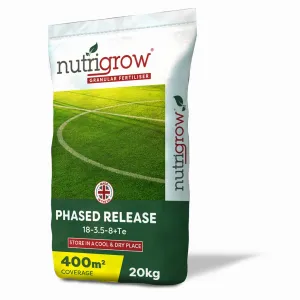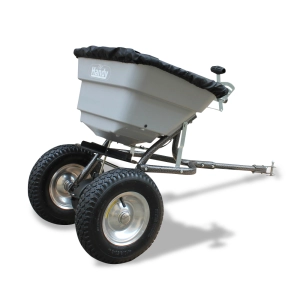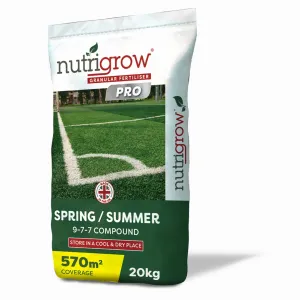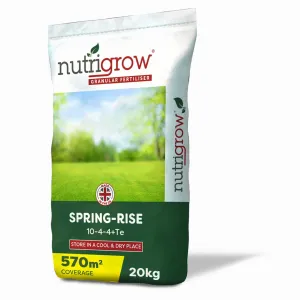


ProloNg 20-4-20+Te Slow Release Fertiliser 20kg
| MULTI-BUY DISCOUNT | ||
| QTY | Price per item | Saving |
|---|---|---|
| 1 - 9 | £50.40 £42.00 | |
| 10 - 19 | £49.20 £41.00 | 3% |
| 20+ | £48.00 £40.00 | 5% |
- Improved utilization and plant take up of applied nitrogen.
- Reduction in wasted nitrogen resulting in improved cost efficiency and reduced environmental impact.
- Season long performance.
- Reduces unwanted growth flushes.
- Reduces soft lush growth and disease susceptibility.
- Reduced chance of scorching.
Full Description
ProloNg 20-4-20+Te is a quality NPK fertiliser which will slowly release over a 4-6 month period. Allowing the plant to draw on available nitrogen over a longer period of time is far more efficient and reduces the amount of nitrogen lost to the atmosphere. The slow-release nature of ProloNg 20-4-20+Te also reduces the sudden surge of top growth usually associated with high nitrogen products; instead of rapid growth, the effects of this fertiliser will be manageable and still leave your lawn looking healthy and lush.
ProloNg 20-4-20 contains three vital macronutrients- nitrogen, phosphate and potassium. Each of these macronutrients has its own benefits; nitrogen aids with photosynthesis, phosphate helps plants convert other nutrients into usable building blocks with which to grow, and potassium regulates CO2 uptake during photosynthesis.
If you require a product which doesn't release for quite as long, consider 46-0-0 Slow Release.
Understanding Fertiliser Analysis:
- Under the metric system the unit of measurement is a kg.
- Recommendations are given in kg/ha.
- A fertiliser with the analysis 20-4-20+1.5Mg contains: 20% nitrogen, 4% phosphate, 20% potassium, 1.5% magnesium.
- So in a 20kg bag: 20% of the 20kg is nitrogen i.e. 5kg N, 4% of the 20kg is phosphate i.e. 0.8kg P, 20% of the 20kg is potassium i.e. 4kg K, 1.5% of the 20kg is magnesium i.e. 0.3kg.
Our Recommendation
- Always read the product label before use.
- Apply ProloNg 20-4-20+Te at 3–6 month intervals.
- If you require a liquid alternative, consider Slow N.
- Look at our Heavy Duty Spreader or Pro Fertiliser Spreader.
- Improve the pH of your soil by applying Granulated Lime.
Technical Specification
| Product | ProloNg 20-4-20+Te Slow Release Fertiliser 20kg |
|---|---|
| Brand | ProloNg |
| Spreading Rate | 50g per m² |
| Period Of Use | Autumn, Spring, Summer |
| Pack Size | 20kg |
| Active Ingredient | 20% nitrogen 4% phosphate 20% potassium 3% calcium 1.5% magnesium 8% sulphur |
| Application Method | Spreader, Spread By Hand |
| Area of Use | Lawns, Sports Turf, Trees, Ornamentals, Amenity Turf |
| Pack Size Coverage | Up to 400m² |
| Safe For Use On | Grass, Lawns, Sports Turf, New Grass, Around Fruit Trees, Conifer Safe, Around Shrubs, Around Trees |
| Granule Size | 2-5mm (maxi) |
Help & Advice
You may also need...
Product Calculator
Purchase the correct amount of product for your requirements with our product calculator - which will tell you how much product you require.
Calculator Disclaimer - This is guide only, For crop specific rates please check the product label.
| MULTI-BUY DISCOUNT | ||
| QTY | Price per item | Saving |
|---|---|---|
| 1 - 9 | £50.40 £42.00 | |
| 10 - 19 | £49.20 £41.00 | 3% |
| 20+ | £48.00 £40.00 | 5% |







